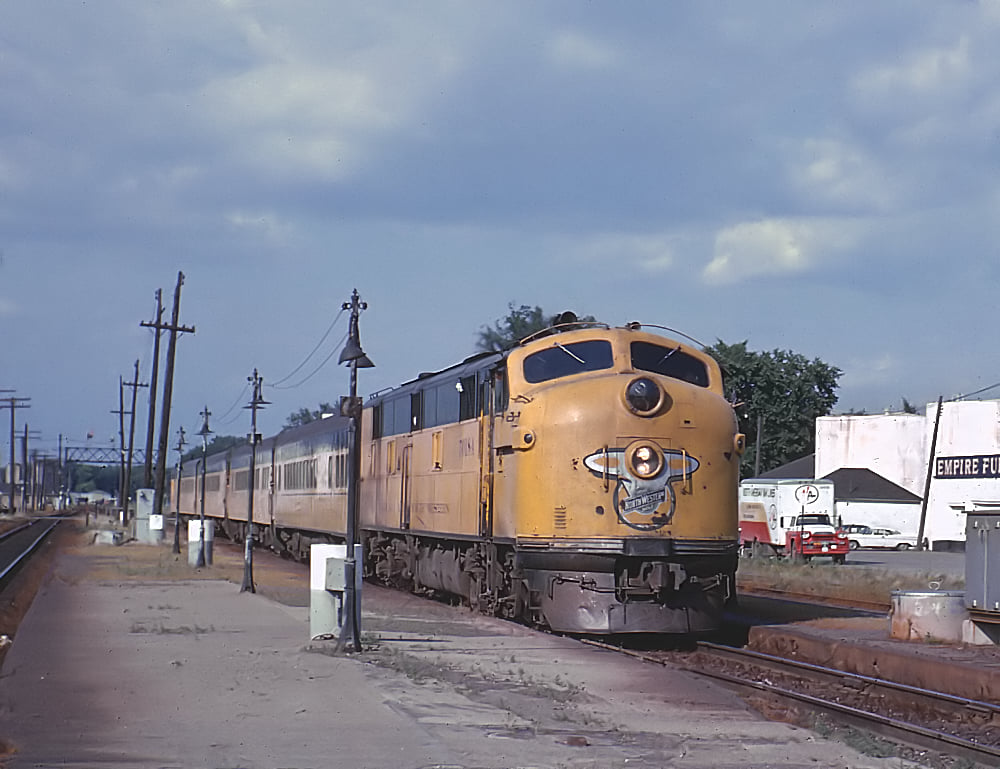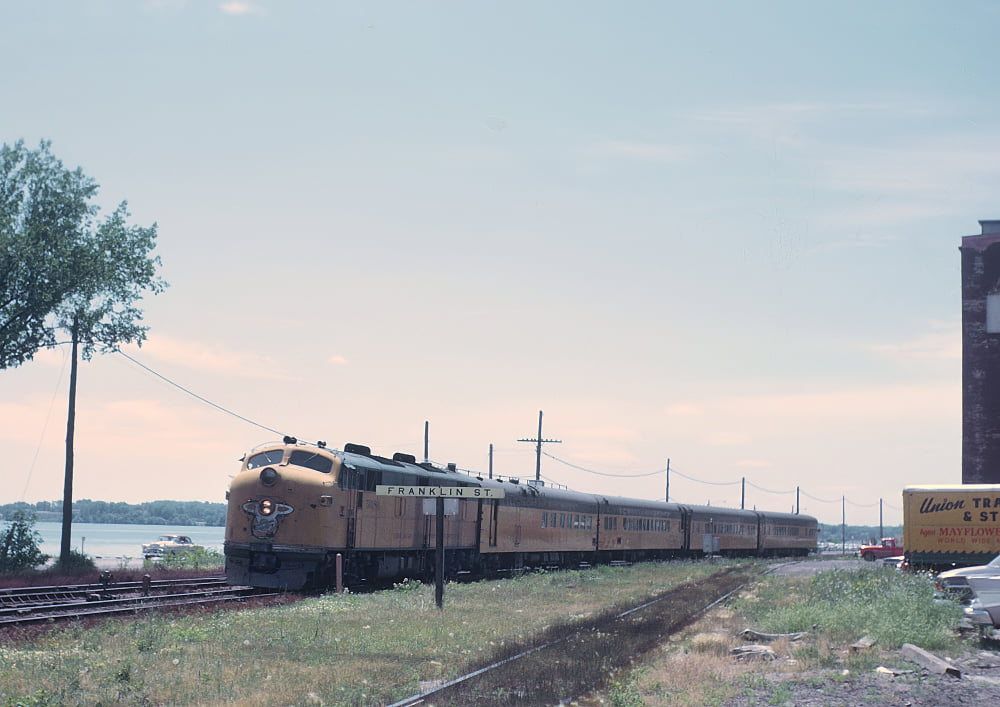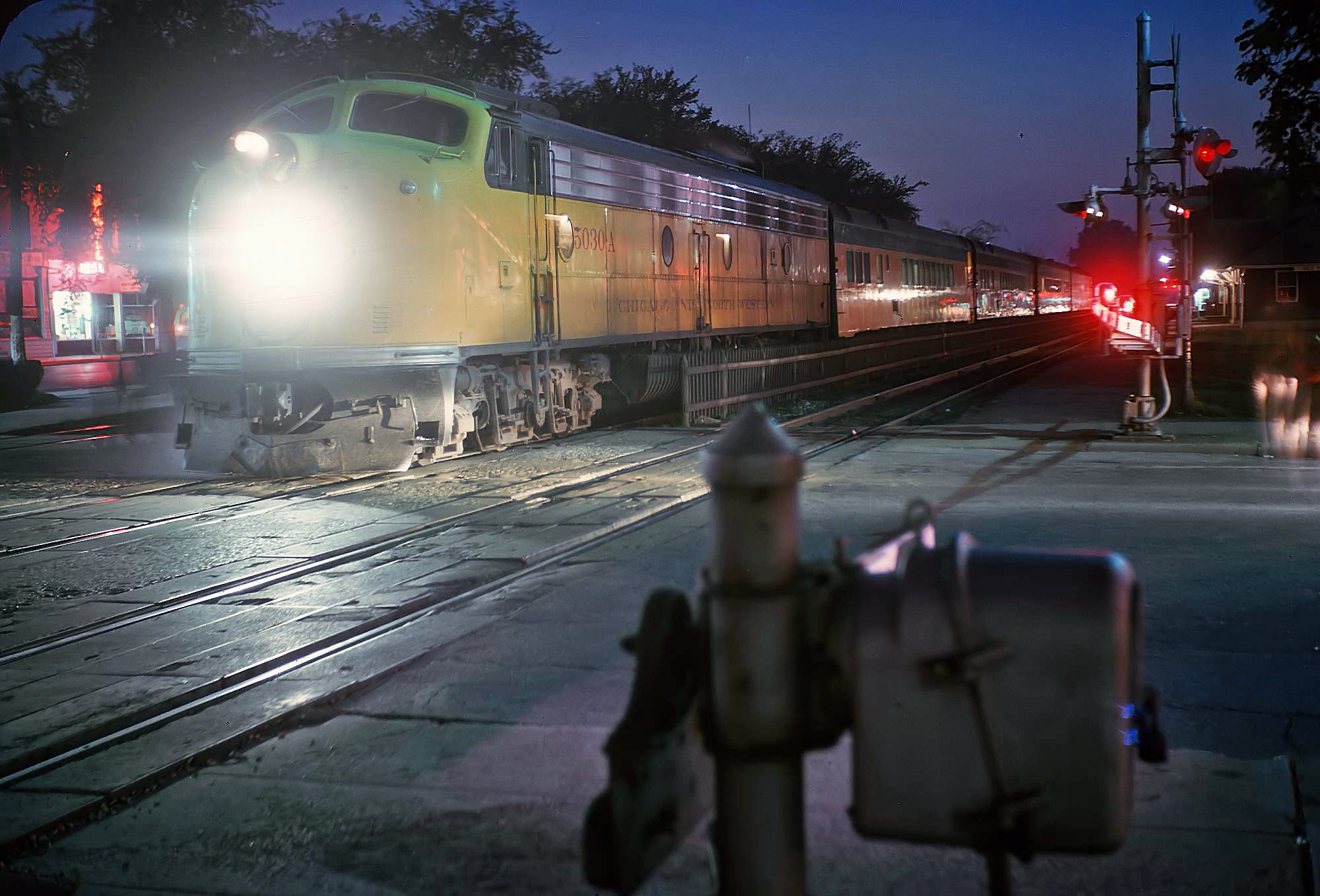The "Minnesota '400'": C&NW's Upper Midwest Streamliner
Published: November 26, 2025
By: Adam Burns
When the Chicago & North Western Railway (C&NW) introduced the “400” concept in 1935, it reshaped expectations for speed, convenience, and modern rail travel across the Upper Midwest. Named for its promise of covering 400 miles in 400 minutes, the idea was more than clever marketing; it symbolized a bold shift toward streamliner-era thinking even before the railroad adopted truly streamlined equipment.
Among the several “400s” that would eventually crisscross the North Western system, none embodied the blend of regional service, institutional loyalty, and local identity quite like the “Minnesota 400.” Connecting Chicago, southern Wisconsin, and southeastern Minnesota, the train ultimately became one of the C&NW’s best-known regional flagships.
The Minnesota 400 began not as a high-speed Chicago–Twin Cities entry — territory long dominated by Burlington and Milwaukee Road competitors — but rather as a strategic route tailored to serve smaller cities bypassed by the mainline streamliners.
Through its decades of operation, the train experienced wartime pressures, equipment upgrades, extensions into the Dakotas, and multiple name changes, before declining passenger demand after World War II finally brought its end. Yet its legacy lives on as one of the North Western’s most distinctive attempts to combine big-train amenities with regional service.
 Chicago & North Western E7A #5018A with Train #518, the "Rochester '400'," at Madison, Wisconsin in July, 1963. Rick Burn photo.
Chicago & North Western E7A #5018A with Train #518, the "Rochester '400'," at Madison, Wisconsin in July, 1963. Rick Burn photo.Origins of the “400” Concept
The original Twin Cities 400, inaugurated in 1935, proved so immediately popular that the C&NW set out to duplicate the formula on other corridors. The idea was simple: provide fast, stylish service using upgraded conventional equipment, excellent schedules, and aggressive branding — all without waiting for streamlined cars or expensive lightweight trainsets.
As the “400” moniker gained fame, management recognized that the network of smaller regional markets in Wisconsin and Minnesota offered fertile ground for new variations. Cities such as Mankato, Winona, Rochester, and Faribault had long relied on the North Western for reliable service, yet none enjoyed a showcase passenger train. The railroad aimed to change that.
By the late 1930s the C&NW had settled on creating a new “400” that would reach deep into southeastern Minnesota along a corridor previously served by slower locals and mixed trains. The intent was two-fold: provide a competitive, modern service for regional travelers while using the momentum of the original 400 to build a system-wide brand synonymous with speed and comfort.
Inauguration of the Minnesota 400
The Minnesota 400 officially entered service on April 27, 1936, operating between Chicago and Mankato, Minnesota. While not a full 400-minute schedule, the train embraced the “400” identity through its enhanced running times, parlor-car accommodations, fast dining service, and distinctive branding.
Its early timetable allowed the C&NW to advertise a new level of convenience for southern Minnesota communities. Prior to the train’s introduction, these towns were served primarily by locals that made frequent stops and often required connections to reach Chicago. The new schedule offered a direct, dignified alternative designed to appeal to business travelers, tourists, and those visiting the Mayo Clinic at Rochester — long a major traffic generator for North Western trains.
The Minnesota 400’s launch was warmly received. Train speeds improved almost immediately thanks to track upgrades, simplified station stops, and a streamlined operating plan that emphasized on-time performance.
Although the service lacked the true aerodynamic streamlining seen on other railroads by the late 1930s, the C&NW compensated through spit-and-polish presentation: smartly decorated heavyweight cars, upgraded interiors, and a marketing push that tied the entire “400” family together with a coherent identity.
Motive Power and Early Equipment
Early power for the Minnesota 400 consisted primarily of Class E-2 4-6-2 Pacifics, later replaced by the C&NW’s well-regarded Class E-7 Hudsons, which provided smooth, stable high-speed running ideal for the train’s demanding schedule. These locomotives, fitted with distinctive yellow trim to echo the “400” branding, quickly became synonymous with the service.
Passenger consists in the 1930s and early 1940s were composed of refurbished heavyweight cars, attractively painted in the North Western’s emerging two-tone green scheme. While not lightweight streamliners, these trains were clean, well-appointed, and offered amenities such as:
- Air-conditioned coaches
- Parlor cars for business travelers
- A full dining car (later a grill-lounge combination)
- Baggage-mail sections to maintain revenue balance
The railroad made continuous improvements, including mechanical upgrades, improved seating, fluorescent lighting, and redesigned interiors that resembled those of the more glamorous Twin Cities 400.
Extension to Rochester and Winona
The early success of the Minnesota 400 convinced executives that the train could serve even more communities. One of the earliest adjustments was the decision to extend service to Rochester, home of the increasingly famous Mayo Clinic. Recognizing this opportunity, the C&NW adjusted schedules and routing so travelers from Chicago and Wisconsin could reach Rochester without transfers.
A further extension to Winona, positioned along the Mississippi River, allowed the train to reach an additional population center while also securing interchange traffic with other roads serving the river towns.
By the end of the 1930s, the Minnesota 400 had evolved beyond a simple Chicago–Mankato run and had become a more substantial corridor service linking a chain of communities that previously lacked fast, high-quality passenger connections.
 Chicago & North Western E7A #5018A has Train #518, the "Rochester 400," at Madison, Wisconsin in July, 1963. Rick Burn photo.
Chicago & North Western E7A #5018A has Train #518, the "Rochester 400," at Madison, Wisconsin in July, 1963. Rick Burn photo. Chicago & North Western E8A #5030-A, the final run of Train #518, the "Rochester 400," in Des Plaines, Illinois running an hour late on July 23, 1963. Rick Burn photo.
Chicago & North Western E8A #5030-A, the final run of Train #518, the "Rochester 400," in Des Plaines, Illinois running an hour late on July 23, 1963. Rick Burn photo.Recent Articles
-
The "Minnesota '400'": C&NW's Upper Midwest Streamliner
Nov 26, 25 10:17 PM
The Minnesota 400 began not as a high-speed Chicago–Twin Cities entry — territory long dominated by Burlington and Milwaukee Road competitors — but rather as a strategic route tailored to serve smalle… -
Georgia Christmas Train Rides In Cordele
Nov 26, 25 09:48 AM
If you’re looking for a holiday outing that blends small-town charm, living history, and pure family fun, south Georgia’s SAM Shortline Railroad and its Cordele Holiday Train deliver in spades. -
A Florida Christmas Train Ride In Fort Myers!
Nov 26, 25 09:42 AM
In Southwest Florida, Seminole Gulf Railway has been part of the region’s rhythm for decades—moving freight that keeps local businesses humming and welcoming locals and visitors aboard its beloved Mur…



